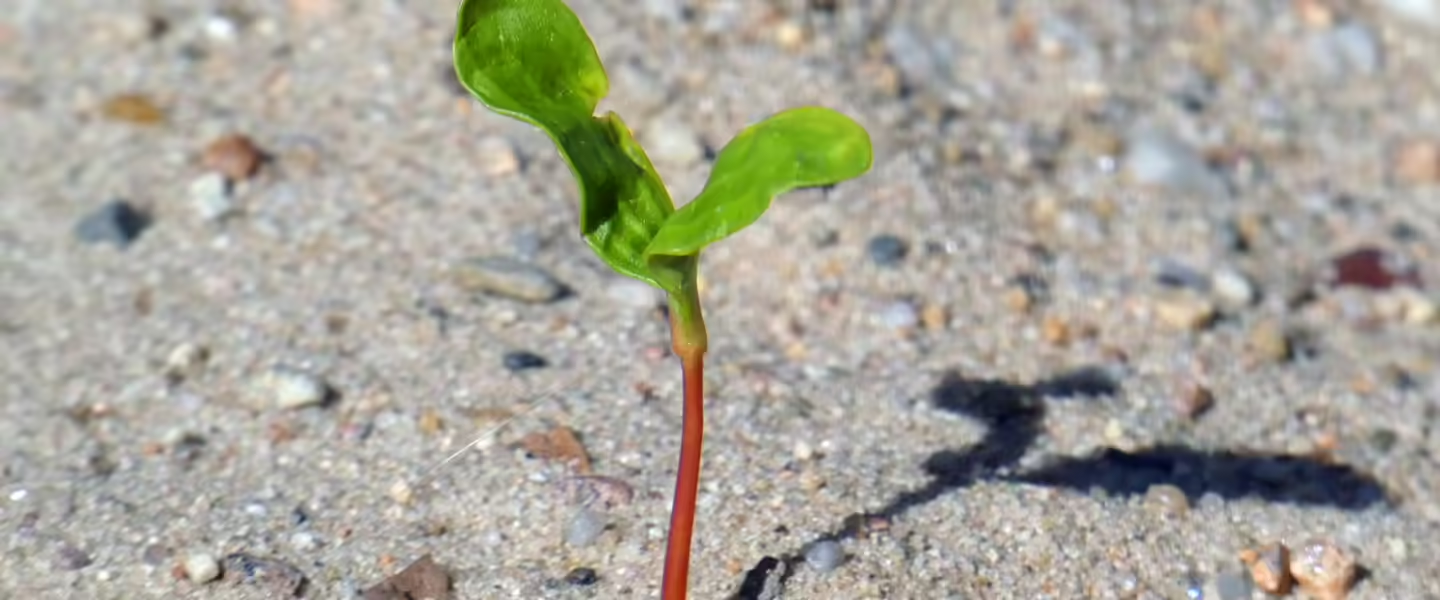Welcome to Saturday Hashtag, a weekly place for broader context.
|
Listen To This Story
|
As of 2024, 33 percent of the world’s soil is degraded by a range of 30-50 percent (depending on the region), in terms of its original productivity and ecological function.
Degraded soil can no longer perform its essential roles, such as storing water, filtering pollutants, or providing nutrients to plants, leading to lower yields, higher food prices, and biodiversity loss.
Additionally, damaged soils pollute water and contribute to climate change by releasing stored carbon.
This problem originated in the groundbreaking innovation that revolutionized agriculture in the early 1900s: the Haber-Bosch process developed by German chemists Fritz Haber and Carl Bosch, which enabled the production of synthetic fertilizers. This is a process that extracts nitrogen from the air and converts it into ammonia, a form of nitrogen that plants can easily absorb for healthy leaf and stem growth.
The problems of soil degradation are significantly exacerbated by soil erosion — the wearing away of the topsoil, by wind, water, etc. US soils are now eroding up to 1,000 times faster than they replenish.
Soils started showing diminishing returns globally in the 1980s after Norman Borlaug’s Green Revolution boosted yields in the1950s. Today data shows up to 50 percent of soil organic carbon is lost which is significantly limiting crop productivity.
By 2050, 95 percent of soils could be degraded, threatening food security and making vast areas unsuitable for farming.
Key Contributing Factors:
- Industrial Farming: Monocropping, over-fertilizing, excessive pesticides, and no restorative practices.
- Deforestation: Increased erosion from land clearing.
- Climate Change: Erodes soil integrity.
- Overgrazing: prevents root growth.
- Erosion: Loss of topsoil.
- Salinization: Overirrigation turns soil salty.
- Acidification: Excess fertilizer makes soil too acidic.
- Soil Compaction: Heavy machinery hampers water and root penetration.
- Loss of Organic Matter: Depletes soil vitality.
This has led to dramatically decreased nutrition in food crops since the 1950s.
- Antioxidants decreased 10-20 percent in various crops.
- Vitamin C decreased 30-50 percent in various crops.
- Calcium decreased 20-40 percent particularly in leafy greens (e.g., spinach, kale).
- Iron decreased 10-15 percent particularly in vegetables and grains.
- Magnesium decreased 25 percent particularly in cereals and vegetables.
- Zinc decreased 15-25 percent in wheat and rice.
- Copper decreased 20 percent in vegetables.
- Vitamin B2 (riboflavin) decreased 10-20 percent in various crops, particularly in high-yielding varieties.
- Vitamin A (beta-carotene) decreased 10-20 percent especially in vegetables like carrots and sweet potatoes.
- Phosphorus decreased 10-20 percent in grains and legumes.
Soil degradation is happening faster than it can be restored. Regenerative agriculture practices like crop rotation and no-till farming show promise but are insufficient on a global scale.
Industrial farming, monocropping, overuse of synthetic fertilizers, and climate change are driving soil depletion, and restoration takes decades.
Efforts like the UN Decade on Ecosystem Restoration face significant challenges due to the scale of the problem and the lack of incentives for farmers to adopt new methods.
Meanwhile, soil carbon loss, erosion, and water issues complicate recovery. Without systemic changes in agricultural practices, soil degradation will continue to undermine food security and environmental health and global stability.
Why 2024 Is a Pivotal Year for Our Soil
From Earth.org: “Our soils are one of the largest carbon sinks in the world. However, in many regions around the world, degraded soils are starting to emit more carbon than they can store. That is why at this year’s UNCCD plenary session as well as at the COP16 and COP29 summits, regenerative soil policy cannot be overlooked.”
UNESCO Raises Global Alarm on the Rapid Degradation of Soils
From UNESCO: “UNESCO is warning that 90% of the planet’s land surface could be degraded by 2050, with major risks for biodiversity and human life. At an international conference in Agadir (Morocco), Audrey Azoulay, Director-General of UNESCO, appealed to the Organization’s 194 Member States to improve soil protection and rehabilitation. UNESCO is also undertaking a number of actions to fill the scientific knowledge gaps in this field.”
Urgent Action Needed to Reverse Soil Degradation in Europe
The author writes, “Soil degradation threatens our competitiveness, food security, agricultural productivity, biodiversity, and resilience to extreme weather events and climate change. Joint efforts at EU, national, and local level focus on restoring soil health.”
Desertification and Drought Day 2024: United for Land, Our Legacy, Our Future
From the Food and Agriculture Organization of the United Nations: “The future of our land faces critical challenges, with up to 40 percent of the world’s land already degraded. Healthy land, crucial for providing 95 percent of our food, clothing, shelter, jobs, and protection from natural disasters, is disappearing at an alarming rate — equivalent to four football fields every second, or 100 million ha annually.”
2024 State of Soils in Europe Report Shows Alarming Trends of Soil Degradation in the EU and EEA
The author writes, “Overall soil erosion is estimated to be 1 billion tonnes annually across the EU. Today, approximately a quarter (24%) of EU soils are affected by water erosion, mainly in cropland, with projections referring to a possible increase of 13-25% by 2050. Unsustainable water erosion affects about a third (32%) of agricultural land. The mechanical agitation of soil, called tillage erosion and a common practice in agriculture, can also initiate soil degradation. Other forms of erosion include wind erosion and crop harvesting, among others.”
Soil Degradation: The Silent Global Crisis
The author writes, “Soil degradation is a major but largely neglected global problem that threatens agricultural productivity, food security, and ecosystem health. Around one-third of soils worldwide are degraded, with over 40 percent located in Africa.”
Degradation of Land Is Threat to Human Life, Saudi Government Says
The author writes, “The degradation of the world’s soils and landscapes is threatening human life, and must be addressed as a matter of urgency, the government of Saudi Arabia has said. Neglect of the land is wiping trillions of dollars from global economies, hampering agricultural production, disrupting water supplies, threatening children with poor nutrition, and destroying vital ecosystems, according to the country’s deputy environment minister.”
How This Company Uses Biochar To Reverse Soil Degradation
From Forbes: “TerraVera specializes in biomimicry solutions and delivering amino-acid-based nutrients without harmful chemicals and synthetic fertilizers for protected crops.”




